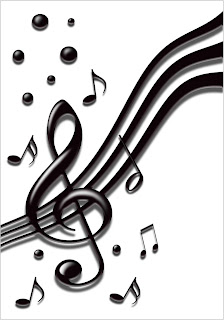I’m surprised that I haven’t blogged about this yet, but it’s just been sitting in the back of my mind for awhile. When it comes to music (and art, generally) in Montessori, I feel some shame. It’s an underdeveloped area that doesn’t have the same thoughtfully-laid-out curriculum that other areas have.
Truth is, none of us would shirk from teaching math or language even if we didn’t feel comfortable with those subjects (or we would find resources that could do it for us, if we were truly unable). But for some reason, when people aren’t musical, it’s easy to leave off this important area of study.
The current emphasis on test scores for math and language in traditional education has pushed music, art, physical fitness, and other subjects completely out of classrooms across America. It’s even more crucial than ever that we, as Montessorians, keep those pursuits alive.
Here’s a small sampling of what the study of music develops:
1. Concentration
2. Counting and other math skills
3. Listening abilities
4. Self-discipline
5. Cooperation
6. Language usage
7. Memory and recall skills
8. Creativity
9. Spatial-temporal reasoning
10. Abstract reasoning
11. Physical coordination (gross- and fine-motor skills)
That list just skims the surface of the benefits of musical education. But can a case be made for including music in the classroom, even if children have a formal music class? I think so. Music class, once or twice a week, is not enough. Music can, and should, be woven into the fabric of the classroom. It can be done though music that plays at lunchtime; through beautiful music played while walking on the line. It can involve studying musical instruments or composers through history, or making musical instruments out of craft supplies like pipe cleaners or clay.
 There are so many musical experiences that can’t happen in the confines of a music class. It may be that large blocks of time are needed. Some activities work better with a few children and not a large group. If you are truly non-musical, then it’s still your responsibility to bring music into the classroom. There are a variety of ways to do this, which I’ll discuss in the next few blog posts.
There are so many musical experiences that can’t happen in the confines of a music class. It may be that large blocks of time are needed. Some activities work better with a few children and not a large group. If you are truly non-musical, then it’s still your responsibility to bring music into the classroom. There are a variety of ways to do this, which I’ll discuss in the next few blog posts.
After my son was born, I stopped teaching full time but instead taught music part time at the same Montessori school. I had already been the school’s de facto music teacher, which included weekly music instruction with each classroom, as well as musicals, dances, and other special events. (My life experience includes piano and voice lessons, numerous choirs, and solos, duets, and trios with my sisters at all manner of conferences, churches, and family events).
I didn’t use one specific curriculum, just cobbled together songs, activities, CDs, worksheets, nomenclature cards, etc. that when taken together, gave kids a pretty good foundation in music theory and practice.
Montessori for Everyone Music Series:
Music in Montessori 1: What are the Benefits?
Music in Montessori 2: Rhythm Activities
Music in Montessori 3: Learning About Pitch
Music in Montessori 4: Musical Instruments and the Symphony Orchestra
Music in Montessori 5: Music Theory
Music in Montessori 6: Movement and Drama
